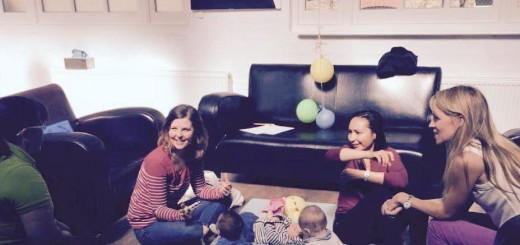Tantrums And Tears by Kerry Secker
Kerry Secker has a Diploma in Childcare from the National Nursery Education Board (NNEB) and has worked as a nanny for 16 years. As well as the UK, she has worked in Switzerland, the USA, France and Italy and has even had the odd celebrity thrown in the mix. She now runs Kerrycaresparenting through which she consults with parents about a multitude of issues that surround the early years from sleeping to fussy eating, from tantrums to toilet training.
Tantrums or preferably called emotional meltdowns, are an all too familiar occurrence in a little person’s repertoire. I do not believe for a nano second that there isn’t a parent on this planet that has not had their offspring meltdown with Buzz Lightyear speed with a volume so great that can be heard in outer space! (Public location preferable). They are perfectly normal and I can reassure you they are NOT an indication or reflection of your parenting. Repeat this to yourself often!
Melt downs will happen when a child feels HUGE emotions, causing them to lose control and unable regain control without some emotional support or input. Scientifically speaking the frontal cortex of their brain that is responsible for controlling their emotions is not yet fully developed and they cannot control or regulate their emotions.
These melt downs can occur at any age and are not just limited (unfortunately) to the famous “terrible twos” though there is a huge difference between a baby or child crying and having a full on melt down. Young babies do not have tantrums they just cry to communicate their needs in the only way they know how.
Melt downs are not an indication of a naughty or spoilt child with a terrible temper to match, and there is no need for any disciplinary action, despite what others may tell you!
Sadly I do not have a one size fits all solution to stopping a meltdown in its tracks because children are all beautifully unique and let’s be honest here, it also depends very much on which way the wind is blowing.
They are most common when a child is tired and/or hungry so trying to keep to a simple nap and feed routine can really help. Coming to recognise the triggers and seeing the signs can sometimes be enough to even head one off (or at least soften the blow) and stop a big one brewing.
For when one takes you by surprise, and it will, here is all you need to know about getting you and your little one through even the out of this world ones:
Try to remember that your child isn’t deliberately giving you a hard time; THEY are the ones having a hard time. Try to see the situation through their eyes and with empathy.
Ignore the on lookers and stares if in public, the one who needs you or whose opinions matter in this moment is you and your little one. If it is causing a genuine disturbance to the general public then it is perfectly reasonable for you to pick up or place your child in a buggy and get out of there as the child will be unable to do that for themselves at this point.
Keep your voice low and soothing when you speak and resist the urge to shout even louder. We are the adults and if we shout we have lost control and it all will just escalate further!
Do not get sucked in a battle, try reasoning or bargaining with them. A child in full melt down mode will be unable to comprehend it all at this point and it makes it last longer.
Acknowledge and allow them to own their feelings no matter how trivial or silly it may seem to you, even the negative ones. Do this by labelling their feelings and the situation for them. For example I can see you are frustrated/angry/mildly/sad annoyed that the dog looked at you/the crayon broke/the beans are on your toast. ALL feelings are valid and sometimes just having your feelings understood and heard is enough. Just keep your language clear and simple.
Don’t exclude or isolate them Just because they dare to display an emotion that let’s be honest even us adults have at times. It is healthy and normal to have these emotions and we need to teach them to deal their emotions in a healthy way and not suppress them.
Give them space but be available if they need contact to calm down. Tempting as it is to say I will only cuddle you when you stop crying/shouting/being frustrated is teaching them that these normal feelings aren’t acceptable and will prolong the meltdown.
It may take some getting used to doing but with practice (and you should get lots with a toddler!) You will be surprised how quickly it becomes easy and like second nature to you. This will help ease the frustration your toddler and hopefully make the meltdowns fewer and further apart.
Once the meltdown has passed, don’t dwell on it or ask why they behaved like that, they will not have a clue why. They should not have to justify their feelings but they do need to learn acceptable ways to vent them.
Accepting and acknowledging their feelings is the consistent and easy part to master, the tricky bit now is how to get them to move on and will very much depend on the day, the wind and the moon in that moment.
These are things I have found have helped me through even the mega meltdowns:
Whisper/shout/ use a funny voice or talk through a toy
Sing a song in a funny voice/whisper/loud voice
Use your sense of humour and try and see the funny side
Pretend to bump into things or fall over or get a toy to do this (do not do this on concrete!)
Make toys dance/sing/talk to them
Blow bubbles
Start an activity and make it look super fun interesting
Make out that you REALLY need their help or expertise with something REALLY important
Put music on and dance your socks off
Offer a drink and a snack
Big glass of wine (you not the child)
If you are concerned about your child’s behaviour, the number of tantrums your child has or would like some bespoke ways to personally help you and your little one get through them please get in touch at www.kerrycaresparenting.com.



























I think that replacing the behaviour is a good intervention strategy, however, I think that perhaps if you are requiring your student to write how she feels/ from whom she needs attention, then she may view this as too much work and revert back to her challenging behaviour. One suggestion I might offer is to use cue cards with different emotions/needs attention on them so that she can select one from her desk and hold it up if she is in need of something. Leave the cards on her desk for easy access; this is a more simple strategy but communicates the same message.I have used cue cards with some of my students and found them to be effective-I know other teachers in regular classrooms in our school use them for students with special needs, too. If these seem unrealistic, then just try simplifying her replacement behaviour. Have her raise her hand and be direct but polite with a cue statement like, I need this please . This will also help her communicate appropriately.Hope that helps a little!
Thanks for the tips and reminders Kerry. We know what a legend you are!